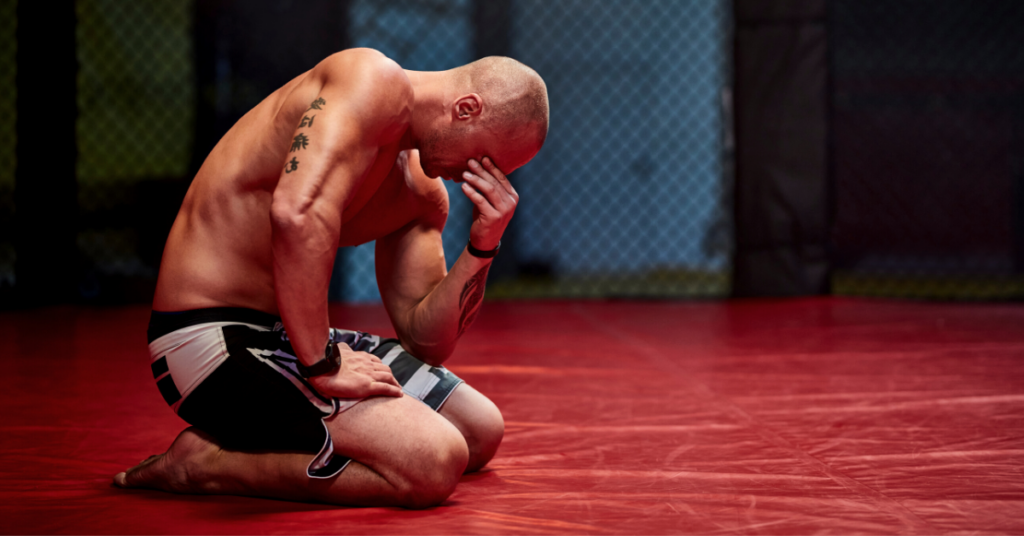
The Science Behind Sports Supplements: How They Work and Which Ones to Choose
The world of sports supplements can be overwhelming, with countless options promising to enhance performance, build muscle, and support recovery.

The world of sports supplements can be overwhelming, with countless options promising to enhance performance, build muscle, and support recovery.

Athletic performance is not solely determined by physical abilities; the mental aspect plays a crucial role as well. To maximize performance, athletes need to develop and employ effective mental strategies.

Self-belief and self-confidence play a crucial role in the success and performance of athletes. When athletes believe in themselves and have confidence in their abilities, they can perform at their best and overcome challenges with resilience.

Setbacks and failures are inevitable in an athlete’s journey. While they can be discouraging and challenging, they also provide valuable opportunities for growth and development.

One powerful tool that athletes can incorporate into their training and daily lives is mindfulness and meditation. These practices can help athletes enhance their focus, reduce stress, and cultivate self-awareness.

When we think about athletes, we often focus on their physical prowess and skills, but what sets apart the best athletes from the rest is their mental resilience. It’s the ability to withstand challenges, recover from setbacks, and maintain a strong mindset that enables athletes to perform at their best, especially when the stakes are high.

As an athlete, it’s not uncommon to experience performance anxiety and stress. The pressure to perform at your best, the fear of failure, and the anticipation of high-stakes competitions can all contribute to these feelings.

Sports psychology is a field that focuses on the mental aspects of athletic performance. It explores the psychological factors that impact athletes’ mindset, performance, and overall well-being. Understanding the psychology of sports can provide athletes with valuable tools to enhance their performance, overcome challenges, and optimize their potential. In this article, we will delve into the various aspects of sports psychology that can benefit athletes in their pursuit of excellence.
To achieve peak performance, athletes need to develop essential mental skills:
Focus and Concentration: Maintaining focus and concentration is crucial for success in sports. Athletes can learn techniques such as mindfulness, attentional control, and pre-performance routines to enhance their ability to stay present and block out distractions.
Goal Setting and Motivation: Setting clear, achievable goals is vital for athletes’ motivation and progress. By setting both short-term and long-term goals, athletes can stay motivated, track their progress, and maintain a sense of purpose in their athletic journey.
Visualization and Mental Imagery: Visualization techniques involve mentally rehearsing successful performances, vividly imagining desired outcomes, and creating a positive mental image of success. This powerful technique helps athletes build confidence, improve technique, and prepare for competition.
Confidence and self-belief play a significant role in athletic success:
Overcoming Self-Doubt and Limiting Beliefs: Athletes must identify and challenge self-doubt and limiting beliefs that hinder their confidence. By reframing negative thoughts, focusing on strengths, and celebrating successes, athletes can cultivate a resilient and confident mindset.
Cultivating a Positive Mindset: A positive mindset is essential for optimal performance. By adopting a growth mindset and viewing challenges as opportunities for growth, athletes can develop resilience, embrace learning, and maintain a positive outlook even in the face of setbacks.
Embracing the Power of Self-Talk: The way athletes talk to themselves, known as self-talk, significantly impacts their performance. By using positive and constructive self-talk, athletes can boost confidence, enhance motivation, and maintain focus during training and competition.
Stress and anxiety can negatively affect athletes’ performance:
Understanding the Impact of Stress on Performance: Stress can impair concentration, decision-making, and physical execution. Athletes must recognize the signs of stress and understand its impact on performance.
Stress Management Techniques: Adopting stress management techniques such as deep breathing exercises, progressive muscle relaxation, and time management strategies can help athletes reduce stress and perform at their best.
Anxiety Reduction Strategies: Anxiety often accompanies competitive sports. Athletes can employ techniques like reframing anxious thoughts, visualization, and pre-competition routines to manage anxiety and maintain a calm state of mind.
Pressure and competition are inherent in sports, and athletes must develop strategies to cope:
Techniques for Dealing with Pressure: Athletes can utilize techniques such as setting realistic expectations, focusing on controllable factors, and utilizing pre-performance routines to effectively manage pressure.
Thriving in Competitive Environments: Embracing competition as a challenge, rather than a threat, allows athletes to perform at their best. By maintaining focus on their own performance and respecting opponents, athletes can thrive in competitive environments.
Developing Resilience and Mental Toughness
Resilience and mental toughness are crucial for bouncing back from setbacks:
Embracing Setbacks and Failures: Resilience is built by viewing setbacks and failures as learning opportunities. Athletes who embrace these challenges and learn from them develop the mental fortitude needed to succeed.
Building Emotional Resilience: Emotional resilience involves managing emotions effectively and bouncing back from adversity. Techniques like self-reflection, seeking support, and developing coping strategies help athletes strengthen their emotional resilience.
Strengthening Mental Toughness: Mental toughness involves maintaining focus, perseverance, and determination in the face of adversity. Strategies like positive self-talk, visualization, and goal-oriented focus contribute to developing mental toughness.
Effective teamwork is essential for success in team sports:
Importance of Teamwork in Sports: Athletes must understand the importance of teamwork, cooperation, and communication. Building positive relationships with teammates, fostering trust, and understanding roles and responsibilities contribute to successful team dynamics.
Effective Communication Strategies: Clear and open communication is vital for cohesive team performance. Athletes should develop effective communication skills, active listening, and constructive feedback techniques to foster a supportive and collaborative team environment.
Conflict Resolution and Cohesion: Conflicts are inevitable in team sports. Athletes should learn conflict resolution strategies, promote open dialogue, and prioritize team cohesion to maintain a harmonious and productive team atmosphere.
Athletes may encounter performance slumps or plateaus, and it’s important to address them:
Identifying and Addressing Performance Slumps: Athletes must recognize the signs of performance slumps and identify contributing factors. By seeking feedback, adjusting training strategies, and maintaining a growth mindset, athletes can overcome slumps and regain momentum.
Strategies for Breaking Through Plateaus: Plateaus can hinder progress, but athletes can break through them by incorporating new training techniques, seeking expert guidance, setting new challenges, and cultivating mental resilience.